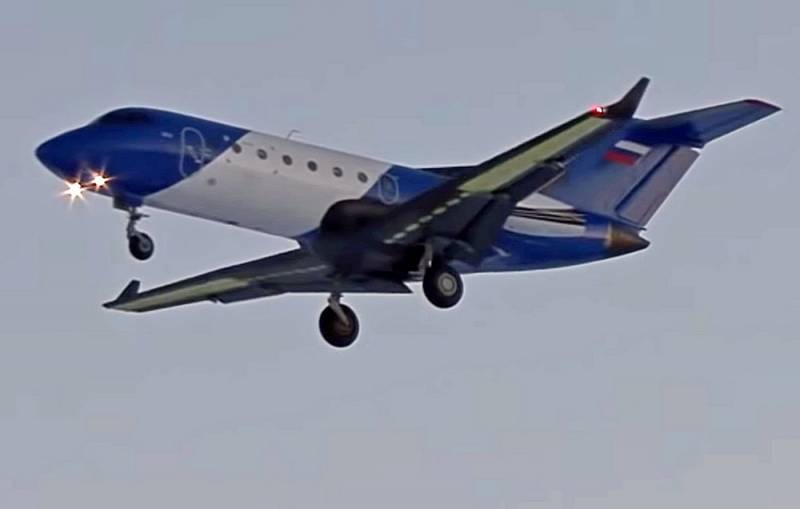To replace the Yak-40: the plane with the "black wing" has passed flight tests
Aircraft with an all-composite wing, created by engineers SibNIA them. S.A. Chaplygin on the basis of the "flying laboratory Yak-40", successfully passed his first flight tests. The prototype was equipped with two engines (the Yak-40 has three) and an integral wing made of composite materials made at the institute. Due to the natural black color, the wing is often called “black”, thus clarifying technology its production.
According to the director of the aforementioned university, Vladimir Barsuk, the tests fully met the expectations of the designers. The functionary also added that after several flights of a 19-seater turbojet aircraft, all work was handed over to the Ministry of Industry and Trade and that’s where the participation of SibNIA in the project is over.
According to the results obtained during the tests, the new aircraft consumes half the fuel and can reach a speed of almost 35% higher than that of its "eminent" predecessor. The entire composite wing installed on the prototype allowed the aircraft to develop a cruising speed of 700 km / h. In the Yak-40, this figure is 500 km / h. In addition, as mentioned above, the tested prototype received two engines instead of three, which allowed to reduce fuel consumption from 1150 kg / h to 560-590 kg / h.
Recall that the Yak-40 is the world's first passenger turbojet aircraft, which was developed by the USSR in 1960. The device belongs to small aviation and is intended for operation by local airlines.
According to the director of the aforementioned university, Vladimir Barsuk, the tests fully met the expectations of the designers. The functionary also added that after several flights of a 19-seater turbojet aircraft, all work was handed over to the Ministry of Industry and Trade and that’s where the participation of SibNIA in the project is over.
According to the results obtained during the tests, the new aircraft consumes half the fuel and can reach a speed of almost 35% higher than that of its "eminent" predecessor. The entire composite wing installed on the prototype allowed the aircraft to develop a cruising speed of 700 km / h. In the Yak-40, this figure is 500 km / h. In addition, as mentioned above, the tested prototype received two engines instead of three, which allowed to reduce fuel consumption from 1150 kg / h to 560-590 kg / h.
Recall that the Yak-40 is the world's first passenger turbojet aircraft, which was developed by the USSR in 1960. The device belongs to small aviation and is intended for operation by local airlines.

Information